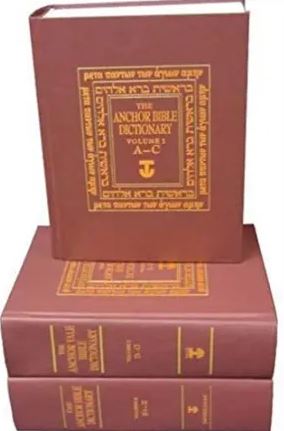During the division of the land in the days of Joshua, the town of Ziklag was given to the tribe of Simeon as their heritage, “The second lot came out for Simeon, for the tribe of Simeon, according to its families; its inheritance lay within the inheritance of the tribe of Judah. It had for its inheritance . . . Ziklag” (Joshua 19:1, 5).
In the days of Saul, Ziklag was controlled by the Philistines. When David fled from Saul and came to live with the Philistines, David said to King Achish of Gath, “If I have found favor in your sight, let a place be given me in one of the country towns, so that I may live there; for why should your servant live in the royal city with you? So that day Achish gave him Ziklag; therefore Ziklag has belonged to the kings of Judah to this day” (1 Samuel 27:5-6).
When the Amalekites raided the Negeb, they attacked Ziklag, burned it down, and took captive the people who lived in the city, including Ahinoam and Abigail, David’s two wives.
According to an article published in The Jerusalem Post, “The name Ziklag gives clues as to the origin of its inhabitants. It is not a local Semitic name but a Philistine name, further proof that the Philistines were not native to the area but migrated to the land of Israel from Europe.”
The site of Ziklag has not been identified with certainty. However, in an article published in The Times of Israel, archaeologist Yosef Garfinkel claims that he has found the site of Ziklag. Below is an excerpt from the article:
Unlike a dozen other leading archaeologists, Prof. Yosef Garfinkel had no intention of searching for the lost biblical town of Ziklag when he commenced excavations in 2015 at Khirbet a-Ra’i, located between Kiryat Gat and Lachish. However, as the twice-yearly dig seasons progressed at the site, about 70 kilometers (43 miles) southwest of Jerusalem, he and his two co-excavation directors, Saar Ganor of the Israel Antiquities Authority and Dr. Kyle Keimer of Macquarie University in Sydney, noted that it was starting to resemble the biblically attested Philistine town of Ziklag, a well-recorded site where the future King David sought refuge from King Saul.
After seven dig seasons that uncovered some 1,000 sq.m., the archaeological team found evidence of a Philistine-era settlement from the 12-11th centuries BCE under layers of a rural settlement dating to the early 10th century BCE, largely considered the Davidic era. Among the findings were massive stone structures and typical Philistine cultural artifacts, including pottery in foundation deposits – good luck offerings laid beneath a building’s flooring. Some of the olive pits and other organic objects found in the deposits were sent for carbon dating, which confirmed their contexts, said the archaeologists.
Given the location of the excavations in the Judaean foothills, Philistine artifacts, along with the carbon-14 dating, have all pointed the archaeologists toward identifying the site as the lost town where David settled in the first and second Books of Samuel.
However, other archaeologists dispute Garfinkel’s claim. In an article published in Christianity Today, Pieter J Lalleman gives five reasons why the site of Khirbet a-Ra’i is not Ziklag. Two of his reasons have to do with a lack of clear identification of the site. He said: “First of all, for the simple reason that the actual name was not found. That’s normal in archaeology; names of locations are hardly ever found, but it does mean that all we have are mute stones. Second, over time a dozen other sites have also been identified as Ziklag. This new site is not automatically the real Ziklag just because someone claims so.”
Archaeologist Aren Maeir, director of the Tell es-Safi/Gath Archaeological Project, does not agree with Garfinkel’s claim. Professor Maeir presented his views in a phone conversation with The Times of Israel. In this conversation, Maeir said,
“This suggestion of Yossi Garfinkel is so unacceptable, it’s unbelievable. There is simply no basis for this. I don’t know how he got to it.”
“The very assumption that every archaeological site is mentioned in the Bible is simply not true.”
Another archaeologist that disagrees with Garfinkel is Israel Finkelstein, Professor at Tel Aviv University. According to an email sent to Times of Israel, Finkelstein said,
“Identification of places mentioned in historical texts, including the Bible, with a given archaeological site is done according to three criteria: the geographical context in which the place is mentioned in the text/s, chronological match between the period of the text or the period portrayed in the text and the finds at the site and, when possible, preservation of the ancient name in the modern (usually Arabic) one,’ wrote Finkelstein. “In the case of biblical Ziklag, the name is not preserved.”
Likewise, in reading the biblical accounts, he said the Philistine site would have been located elsewhere.
“Geographically, the story of David at Ziklag seems to require a site located in the territory of Gath, as close as possible to the desert fringe. Khirbet a-Ra’i is located too far from the desert fringe, in the heartland of the Shephelah.”
The debate about the location of biblical Ziklag will continue. However, the various argument presenteds by Meir and Finkelstein seem to put in doubt that Khirbet al-Ra’i is the biblical town of Ziklag.
The articles in The Times of Israel and in The Jerusalem Post have several pictures of the site and of the findings at the Khirbet al-Ra’i.
Claude F. Mariottini
Emeritus Professor of Old Testament
Northern Baptist Seminary
NOTE: Did you like this post? Do you think other people would like to read this post? Be sure to share this post on Facebook and share a link on Twitter so that others may enjoy reading it too!
I would love to hear from you! Let me know what you thought of this post by leaving a comment below. Be sure to like my page on Facebook, follow me on Twitter, Facebook, and subscribe to my blog to receive each post by email.
















